The River Calder is generally taken to mean “hard water” i.e. a bouldery stream, very apt for this mobile river which has its headwaters in the high grounds of the Monadhlaiths before joining the Spey at Newtonmore.
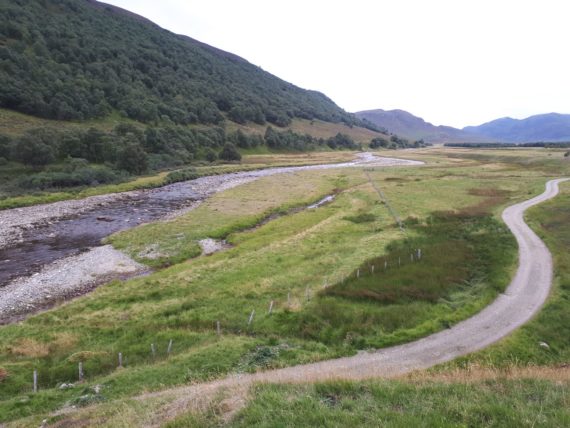
Our monitoring in the Calder had identified that is was a part of the catchment where juvenile stocks currently appeared to be well below what had previously been found there. At the 2017 Spey stocking sub-committee meeting it was agreed that an attempt would be made to try and increase the juvenile population in the River Calder.
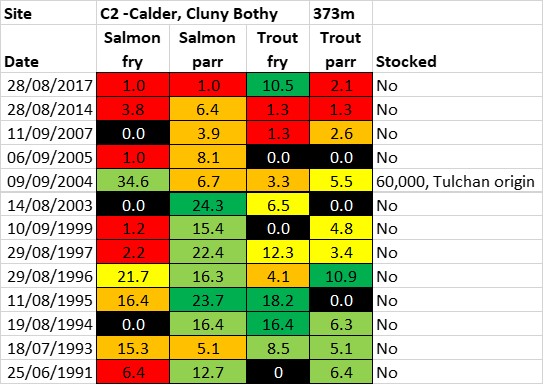
Broodstock were collected from the Spey mainstem, in the Newtonmore area, in Oct 2017 and the eggs held in the hatchery at Sandbank. Vehicle access to the upper reaches of the Calder is poor. There is a riverside estate road as far as the middle reaches, but the only access to the upper reaches is via the Cluny Estate track. For this reason it was decided to stock the upper reaches with eyed ova. Eyed ova are easy to transport; they can be carried a long way in a bucket. Accordingly in early March Steve and Brian collected 18,500 eyed ova from the hatchery and headed to the upper Calder.
This was shortly after the “Beast from the East” but as the eggs were beginning to hatch they had to be planted out or the window for this type of stocking would have been missed. After a snowy drive we arrived at the river, but where was it? Most of the river was covered in snow and ice but thankfully there were enough suitable open areas to allow us to create 14 artificial redds where the eggs were planted out.

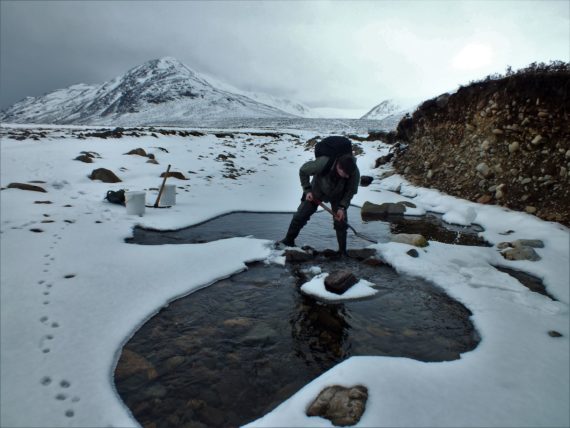



Prior to the egg planting a day was spent redd count in the Calder in Nov 2017. In the upper 5km 15 redds were counted, a low density in comparison with most other parts of the catchment, but it showed that some fish were spawning in the Calder.

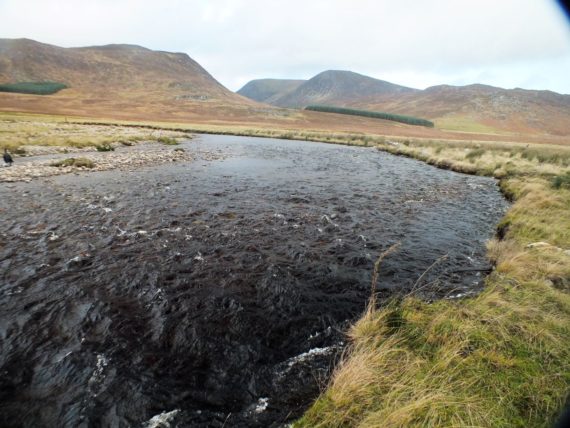
.The remainder of that upper Spey stock were held in the hatchery for planting out in September this year, at the more usual 0+ parr stage.
One of the key roles of electrofishing is to monitor activities such as stocking. Earlier this week Steve, Jim and Brian spent a day and a half completing a range of electrofishing surveys in the Calder. These surveys included a repeat of the 2017 timed surveys, a semi-quantitative (area based) survey at the long term C2 site (see above), and a new semi-quantitative survey for the new National survey (https://www.gov.scot/Topics/marine/Salmon-Trout-Coarse/Freshwater/Monitoring/ElectrofishingProgramme ).


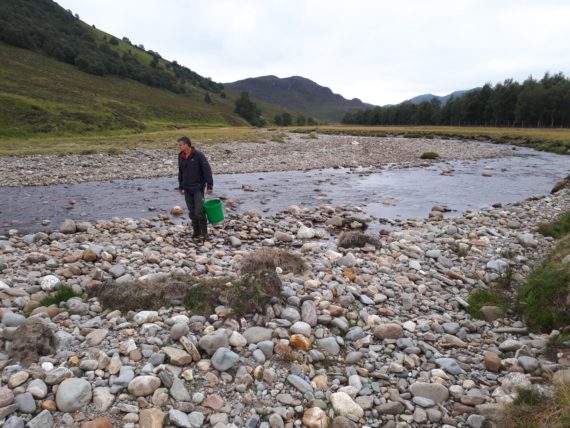
There was no timed site close to the upper limit of the eyed ova stocking but we resurveyed site C2 again. This was a quantitative site so the results are per 100m2.
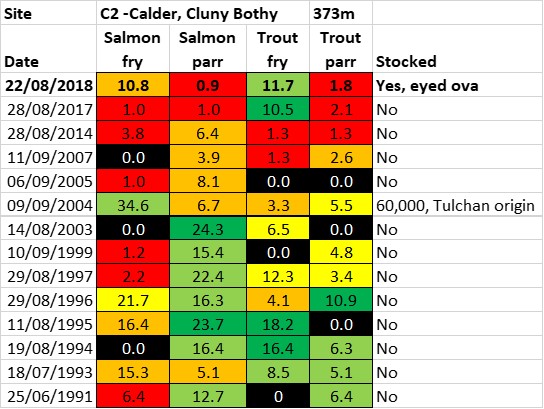
It appears from the electrofishing that salmon fry, and parr counts/densities, were much improved in the Calder this year. The timed surveys suggest that the stocking with eyed ova resulted in improved fry densities in the upper reaches, although it is not possible to be certain without further studies such as genetic analysis.
Fry counts were very low in site TC05, which is located at the top of the steep section in the glen, where salmon spawning opportunities are limited or non-existent.

.
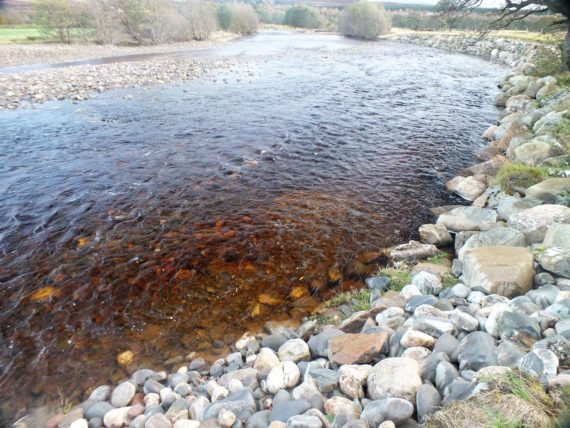
To summarise
– there were improved fry, and parr counts throughout the Calder in 2018, some of will be due to the eyed ova stocking
– consistent low fry counts were identified in the steep section through the glen, the remainder of the fry in the hatchery could be stocked here
– the lower reaches could be a suitable site for a fry translocation trial
– the Calder is a high energy tributary, the river bed is unstable and mobile under very high flow conditions.
– flows over the last year have been relatively benign, a necessity for decent juvenile densities in the Calder.

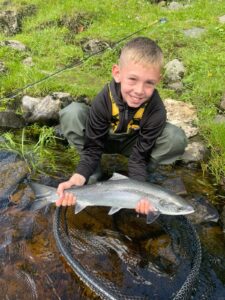
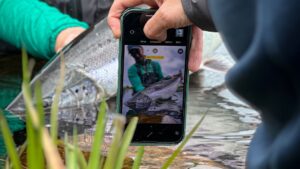
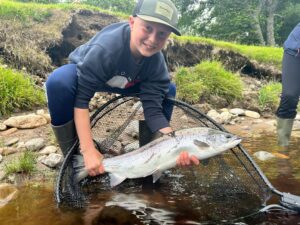


2 thoughts on “River Calder stocking monitoring”
Brian
did you actually try translocating fry this year and if so did you think it was a success or did you learn any lessons from it. I see you mentioned it as a possibility on the Calder but can’t see any further mention of it.
Brian
Did you manage to try translocation of fry this year and if so did you learn any lessons from it – I see it mentioned as a possibility but can’t see any further mention of it.